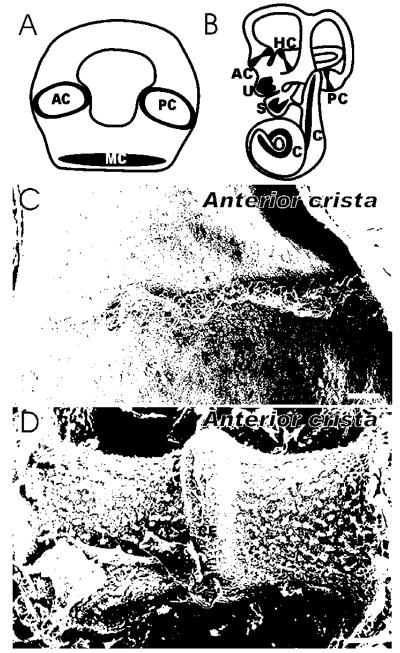Fig. 1.
A brief survey of major evolutionary changes in the ear is presented. Hagfish, a jawless vertebrate, have a single torus that contains two canal cristae and a single common macula (A). Mammals such as mice have three canal cristae and two organs for linear acceleration perception with otoconia as well as a cochlea (B). The canal cristae show differences in their organization. Mammals have a crista that sits on a ridge separated by a cruciate eminence (CE) that is covered by a cupula (removed in D to show the hair cell bundles). In contrast, hagfish have no cupula and the sensory hair cells are arranged to form a ring around the largest diameter of ampullary enlargement (C). AC, anterior crista; C, cochlea; CE; cruciate eminence; HC, horizontal crista; MC, macula communis; PC, posterior crista; S, saccule; U, utricle. Bar indicates 100 μm. Modified after [45].

